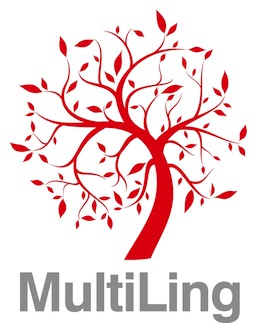Difference between revisions of "Managing datasets"
(Added a page regarding file storage) (Tag: Visual edit) |
|||
| (24 intermediate revisions by 2 users not shown) | |||
| Line 1: | Line 1: | ||
| − | + | [[File:multiling-logo-260px.jpg|right]] | |
| − | |||
| − | + | [[Category:Procedures and guidelines]] | |
| − | === | + | == Data Lifecycle == |
| − | |||
| − | |||
| − | |||
| − | |||
| − | + | Research begets data and where it resides depends on the nature of the data and timing of the project. You probably have one primary computer that you do your work on. On this computer you plan your lab activity and from this computer you will be handling the collected data afterwards. In the meantime you move data from the primary computer to the lab, conduct the experiments and move the data back. Depending on the nature of the data it will either end up on our network storage disk or the secure storage of ''TSD''. How you move the data is also dependent on the requirements of security. If the data is unclassified, you can move it any way you like, but if the data is sensitive the transfer needs to be encrypted as well. You can borrow encrypted portable disks from the lab. | |
| − | |||
| − | + | == TSD == | |
| + | TSD is UiO's Storage solution for sensitive data. Any data that could be considered sensitive should end up here. Examples of this includes data containing information that can be linked to an individual or identifying an individual so that ''other'' data which is sensitive could be correlated to that individual. Most contact information to underaged persons is considered sensitive. Health and patient data is almost always sensitive. | ||
| − | + | For more about how to start using TSD, read the dedicated [[TSD]] entry. | |
| − | + | == File servers for non-sensitive data == | |
| − | + | The [[File Server for Non-TSD projects|hf-depot file server]] is intended to provide research projects with disk storage and group-level access to datasets that are recorded in the lab. | |
| − | |||
| − | + | == Encrypted external hard drives == | |
| + | The lab has five encrypted 1 TB IronKey USB harddrives for data recorded on our eyetracker system. | ||
| − | + | The hard drives can be borrowed from the lab. | |
Latest revision as of 12:52, 6 February 2020
Contents
Data Lifecycle
Research begets data and where it resides depends on the nature of the data and timing of the project. You probably have one primary computer that you do your work on. On this computer you plan your lab activity and from this computer you will be handling the collected data afterwards. In the meantime you move data from the primary computer to the lab, conduct the experiments and move the data back. Depending on the nature of the data it will either end up on our network storage disk or the secure storage of TSD. How you move the data is also dependent on the requirements of security. If the data is unclassified, you can move it any way you like, but if the data is sensitive the transfer needs to be encrypted as well. You can borrow encrypted portable disks from the lab.
TSD
TSD is UiO's Storage solution for sensitive data. Any data that could be considered sensitive should end up here. Examples of this includes data containing information that can be linked to an individual or identifying an individual so that other data which is sensitive could be correlated to that individual. Most contact information to underaged persons is considered sensitive. Health and patient data is almost always sensitive.
For more about how to start using TSD, read the dedicated TSD entry.
File servers for non-sensitive data
The hf-depot file server is intended to provide research projects with disk storage and group-level access to datasets that are recorded in the lab.
Encrypted external hard drives
The lab has five encrypted 1 TB IronKey USB harddrives for data recorded on our eyetracker system.
The hard drives can be borrowed from the lab.
